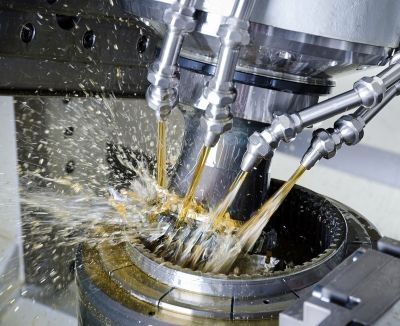IMTS Preview: Liebherr Gear Technology
AT IMTS 2018, Booth 236914, Liebherr Gear Technology will demonstrate its gear skiving process on its LK series machines based on the tried-and-tested components of the corresponding large hobbing machines but equipped with greater rigidity and more powerful spindles. A gear skiving machine requires a table with a direct drive owing to the high workpiece speeds required. This drive works with an automatic control that constantly has the optimal parameters. The complex clamping fixture, which links the workpiece and the machine, is designed by Liebherr.
As skiving is a highly dynamic process, the machine is supplied on a “turnkey” basis with individual clamping fixtures for each workpiece, precise rigidity and contour accuracy. “This overall view is an important part for the production success”, explains Siegfried Schmidt, team leader in development and design of skiving. “A complex process such as skiving has many specific obstacles, which we overcome with very specific mathematical solutions.”
With its skiving3 program, Liebherr not only provides the LK 300 or 500 skiving machine, but a whole process, including machine, tools and technology for gear production. This integrated approach from Liebherr has already been tried and tested in practice. For many customers, the process of skiving is new, and therefore the operators of the machines need comprehensive training and assistance. On top of that, the tool design is a very complex issue
Skiving3 is popular especially for internal gearing with medium size and quantity as it is much faster than shaping and more economical than broaching. In situations where gear skiving is not possible or appropriate, owing to interfering contours or quantities that are too low, Liebherr still offers technological alternatives with gear shaping and gear hobbing.
The newly developed LHGe@rTec control system also contains the mathematical formulas for pressure angle corrections. This way, quality improvements can be easily achieved via the kinematics of the machine.
The optional tool changer, which can be used to change between roughing and finishing tools, for example, is new. Liebherr offers a ringloader as a standard option for the workpiece changing device; other automation solutions, such as belts and robots, can also be realized upon request.
Additionally, Liebherr Automation Systems will demonstrate its new PHS Allround pallet handling system, designed to enable a broad range of shops to engage in flexible production in combination with 4- and 5-axis machining centers. The new modular concept, available in three capacities, can handle loads up to three tons, is extremely flexible, and can be individually configured and expanded. This corresponds to pallet sizes of 500 x 500 mm to 1000 x 1000 mm. Users can introduce flexible production systems with manageable investment and expand them when necessary.
The customer is able to combine preconfigured modules as needed to match production handling needs: the storage locations can be arranged in a circular pattern, with one or more machines, or in a line.
According to Liebherr, this extremely space-efficient system fits in almost every production floor. The user can easily expand a production system with the Allround, spreading investment over different expansion stages. It is no problem to start with one or two machines and increase this number to five, for example, as production changes.
For all Liebherr pallet handling systems (RLS, PHS Pro and PHS Allround), Liebherr offers a new cell control with simple operation as its priority. The new graphically-guided interface concentrates functions on the main computer in a user-friendly manner, and if required also allows full production control. This includes resource planning, cutting tools and NC data management plus also interfaces to the ERP systems.





